Resources
About Us
Sustainable Manufacturing Market Size, Share, Forecast, & Trends Analysis by Product Offering (Bioplastics and Biopolymers, Green Hydrogen, Recycled Materials,), Industry Application (Automotive & Transportation, Aerospace & Defense, Packaging) – Global Forecast to 2032
Report ID: MRCHM - 1041460 Pages: 250 Mar-2025 Formats*: PDF Category: Chemicals and Materials Delivery: 24 to 72 Hours Download Free Sample ReportThe growth of this market is driven by increasing government regulations on emissions, the rising adoption of circular economy practices, technological advancements in manufacturing, and growing consumer demand for eco-friendly products. Additionally, increasing corporate sustainability initiatives and investments in green technologies offer lucrative growth opportunities for market players.
Regulations and policies by the government significantly influence industries, business operations, and market expansion. As more focus is given to environmental conservation, employee safety, and responsible business practices, governments across the globe are putting in place rigorous regulations to comply and encourage sound corporate conduct. Such policies extend to manufacturing, energy, transport, healthcare, and technology industries, compelling companies to implement new standards, spend on sustainable alternatives, and innovate for sustained competitiveness.
One of the most powerful domains of government intervention is in environmental protection. With growing climate change issues, nations are adopting legislation to mitigate carbon emissions, control waste management, and promote the use of renewable energy. Regulatory schemes like the EU Green Deal, the U.S. Clean Air Act, and China's Carbon Neutrality objectives have ambitious visions for curbing environmental footprint. Companies have to meet emission standards, use cleaner production methods, and employ environmentally friendly waste management practices.
For instance, the European Union's Emissions Trading System (ETS) places a cap-and-trade system, whereby firms are required to buy allowances if they exceed the emissions. Likewise, India's Extended Producer Responsibility (EPR) policy requires businesses to effectively handle post-consumer waste. Such policies compel industries to re-examine their processes and invest in cleaner options, like electric cars, biodegradable packaging, and energy-efficient production processes.
To promote compliance and reduce the economic costs of adjustment, governments offer numerous incentives and financial assistance. Tax incentives, subsidies, and grants are provided for corporations investing in cleaner technologies, renewable energy, and eco-friendly production practices. As an example, the United States Inflation Reduction Act (IRA) offers tax credits for renewable energy projects, electric vehicle producers, and companies transitioning to low-carbon solutions.
Carbon credits and green funding programs also assist companies in becoming sustainable. Most governments collaborate with global organizations to provide low-interest financing and green bonds for environmentally friendly projects. These rewards not only assist industries in meeting compliance, but they also provide novel market opportunities for sustainable services and products.
In addition to environmental laws, governments impose rigid regulations to uphold workplace safety, labour rights, and consumer welfare. Occupational safety and health legislation, like OSHA in America and the Factories Act of India, obliges industries to maintain safe work environments, good equipment, and training on dangers for workers.
Consumer protection legislation also plays an important part in defining industries, especially food, drugs, and consumer product industries. The government regulates the labelling of products, standards for safety, and quality checks to safeguard public health and prevent deceit. Adherence to these policies helps companies retain market credibility, prevent legal repercussions, and establish customer confidence.
The transition to a circular economy is picking up speed as companies, consumers, and governments realize the importance of sustainable resource use. In contrast to the conventional linear economy, which operates on a "take, make, dispose" basis, the circular economy focuses on minimizing waste, reusing products, and recycling goods to maximize their lifespan. This change is spurred by environmental issues, economic potential, and changing consumer behaviour, making it a major market driver in industries like manufacturing, fashion, packaging, and technology.
One of the key objectives of the circular economy is waste reduction and maximization of resource use. Businesses are increasingly using measures like remanufacturing, refurbishment, and recycling to maximize product lifespan and minimize raw material dependence. For instance, most electronics companies now have device trade-in schemes where old gadgets are refurbished and resold, minimizing e-waste and production expenses. Likewise, within the fashion world, companies such as Patagonia and H&M have introduced programs to recycle used clothing into new products, encouraging a greener business practice.
Through emphasizing resource efficiency, companies not only support environmental preservation but also derive cost advantages. Recycling lowers manufacturing costs, and circular supply chains alleviate risks due to raw material shortages and volatility. This reduces the long-term profitability and resiliency challenges against global supply chain disruptions.
Governments globally are encouraging the circular economy with policies, incentives, and waste management regulations. For instance, the European Union's Circular Economy Action Plan imposes higher recycling rates and prohibits single-use plastics to promote environmentally friendly consumption. In a similar way, India's Extended Producer Responsibility (EPR) policy requires producers to deal with product waste effectively, promoting circular business models.
Because of regulatory forces and shareholder demands, companies are establishing challenging sustainability targets. Companies now pledge zero-waste manufacturing, carbon elimination, and sustainable sourcing, aligning circular economy strategies with their operations. IKEA and Adidas, among other companies, are creating products that are recyclable and biodegradable and showcasing the power of circularity in innovation and differentiation.
Today's consumers are greener than ever before, opting for products that resonate with sustainable values. Increased eco-friendly consumption has created an explosion in the demand for recycled, upcycled, and ethically manufactured products. The trend is observable in sectors such as fashion, electronics, and packaging, where companies providing sustainable options are enjoying a competitive advantage.
Recycled materials are likely to rule the market in 2025 as companies move more and more towards sustainable and green alternatives. Demand for recycled plastics, metals, fabrics, and paper is increasing with increased environmental awareness, regulatory pressure, and business sustainability initiatives. Governments across the globe are implementing waste management laws, single-use plastic bans, and extended producer responsibility (EPR) schemes, further pushing the use of recycled materials.
These sectors like packaging, automotive, fashion, and construction are seriously integrating recycled content in their production process. For instance, big brands in the packaging industry are moving towards using recyclable and biodegradable packing materials in response to consumers' demands as well as legislative pressure. In a similar fashion, the auto industry is utilizing recycled metals and plastics in manufacturing vehicles to help decrease carbon traces. In the apparel sector, companies such as Nike and Adidas are creating clothing and shoes using recycled ocean plastic and post-consumer waste, raising the bar on sustainability.
The economic advantages of recycling materials also drive market expansion. Companies can reduce their reliance on virgin raw materials, lower production costs, and avoid supply chain risks. Moreover, advances in recycling and material recovery technologies are enhancing the quality and performance of recycled products, making them more appealing to businesses and consumers.
With sustainability at the forefront of consumer choice and business strategy, recycled materials will be the best market opportunity of 2025, promoting circular economy and cutting environmental footprint.
The packaging sector is predicted to maintain the highest market share in 2025 because of the increasing need for sustainable and green packaging. As environmental concerns grow and government regulations on plastic waste become tougher, businesses are turning towards biodegradable, recyclable, and reusable materials for packaging. The increasing size of the e-commerce industry and the food and beverage sector's emphasis on lowering plastic consumption further fuels this.
Large brands and companies are embracing sustainable packaging initiatives, including using recycled paper, plastics, and bio-based content in their packaging. Advances in compostable packages, edible packs, and lighter-weight structures are also catching attention. Furthermore, the increased trend of extended producer responsibility (EPR) regulations is pressuring manufacturers to make investments in green packaging solutions.
Shoppers are progressively gravitating toward sustainable brands, forcing companies to ensure they get behind sustainable trends to stay ahead in the marketplace. In addition, innovations in material science and recycling technology continue to improve sustainable packaging quality and durability.
Rising consumer engagement, regulatory affirmation, and marketplace innovation, meanwhile, are setting the packaging space to lead the market, opening the greatest prospect for business expansion in 2025.
The Asia-Pacific region is projected to lead the market in 2025, fueled by industrialization, urbanization, and growing demand for eco-friendly products. China, India, Japan, and South Korea are leading this growth with robust government support for green materials and tighter regulations on plastic waste management.
The thriving manufacturing base of the region, specifically packaging, automobile, textiles, and consumer products, is propelling the demand for recycled and green materials. Further, increased awareness among consumers of environmentally friendly products and growing prominence of multinationals embracing sustainability also propel the market.
China, being the world's largest producer and consumer market, has implemented robust recycling rules and single-use plastic bans, prompting businesses to embrace circular economy thinking. Likewise, India's Swachh Bharat Abhiyan and extended producer responsibility (EPR) mandates are boosting demand for recycled and biodegradable products.
With robust government backing, increasing environmental issues, and increasing investments in sustainability, Asia-Pacific will dominate the market in 2025, providing enormous growth prospects for companies that are eco-solution focused.
The report includes a competitive landscape based on an extensive assessment of the key strategic developments that market participants have adopted over the past three years . The key players profiled in the global sustainable manufacturing market report include Siemens AG (Germany), Inter IKEA Holding B.V. (Netherland), Schneider Electric (France), Orsted (Denmark), Braskem (Brazil), NatureWorks LLC (U.S.), Veolia (France), BASF SE (Germany), Unilever (London), 3M Company (U.S.), Tesla, Inc. (U.S.), UNIFI, Inc. (U.S.), Umicore (Belgium).
|
Particulars |
Details |
|
Number of Pages |
250 |
|
Format |
|
|
Forecast Period |
2025–2032 |
|
Base Year |
2024 |
|
CAGR (Value) |
11.1% |
|
Market Size in 2025 |
USD 242.38 billion |
|
Market Size in 2032 |
USD 430.64 billion |
|
Segments Covered |
By Product Offering
By Industry
|
|
Countries Covered |
North America (U.S., Canada), Europe (Germany, U.K., Spain, Italy, France, Netherlands, and Rest of Europe), Asia-Pacific (China, India, Japan, , South Korea, Australia, and Rest of Asia-Pacific), Latin America (Brazil, Mexico, Argentina, and Rest of Latin America), and the Middle East & Africa (Saudi Arabia, South Africa, UAE, and Rest of Middle East & Africa) |
|
Key Companies |
Siemens AG (Germany), Inter IKEA Holding B.V. (Netherland), Schneider Electric (France), Orsted (Denmark), Braskem (Brazil), NatureWorks LLC (U.S.), Veolia (France), BASF SE (Germany), Unilever (London), 3M Company (U.S.), Tesla, Inc. (U.S.), UNIFI, Inc. (U.S.), Umicore (Belgium). |
The global Sustainable Manufacturing Market was valued at $220.12 billion in 2024.
The market is projected to grow from $242.38 billion in 2025 to $430.64 billion by 2032
By region, Asia-Pacific is expected to hold the largest sustainable manufacturing market share in 2025. Moreover, this region is also expected to witness the fastest growth, driven industrialization, urbanization, and growing demand for eco-friendly products. China, India, Japan, and South Korea are leading this growth with robust government support for green materials and tighter regulations on plastic waste management.
The key players operating in the global sustainable manufacturing market are Siemens AG (Germany), Inter IKEA Holding B.V. (Netherland), Schneider Electric (France), Orsted (Denmark), Braskem (Brazil), NatureWorks LLC (U.S.), Veolia (France), BASF SE (Germany), Unilever (London), 3M Company (U.S.), Tesla, Inc. (U.S.), UNIFI, Inc. (U.S.), and Umicore (Belgium).
By Product Offering, the recycled materials segment is forecasted to hold the largest market share and by industry, the packaging sector is predicted to maintain the highest market share.


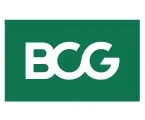
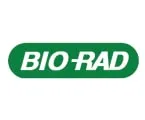


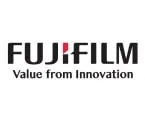

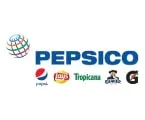
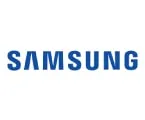


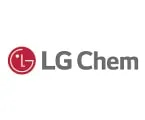



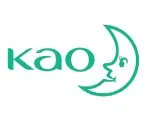

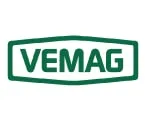


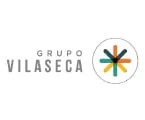


Published Date: Oct-2024
Published Date: Jun-2024
Please enter your corporate email id here to view sample report.
Subscribe to get the latest industry updates